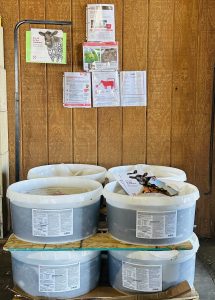 Cattle Mineral Tips for Spring: As winter shifts to spring, it’s time to take a look at cattle management. Specifically, your cattle mineral program. Make sure cattle management, and cattle mineral, reflect the season to help keep cattle performing year-round.
Cattle Mineral Tips for Spring: As winter shifts to spring, it’s time to take a look at cattle management. Specifically, your cattle mineral program. Make sure cattle management, and cattle mineral, reflect the season to help keep cattle performing year-round.
Combating horn flies takes energy, which means cows have less energy for lactation, maintenance and growth. This forces cows to work harder to graze and replenish lost stores.
Use our convenient Wind and Rain Mineral program to start feeding mineral with Altosid IGR before adult flies begin their reproduction cycle.
Quick, timely considerations for your Purina cattle mineral program:
- It can be tough getting cattle to eat mineral when grass is green and lush. Have one cattle mineral feeder for every 20 to 30 head. You can also use a complete cattle mineral or mineral tub to encourage consumption.
- Ensure cattle receive enough magnesium to prevent grass tetany. Consider using Wind and Rain® Storm® Hi Mag Cattle Mineral.
- Spring grass typically has the highest phosphorus level of the growing season. Mineral sources of phosphorus and magnesium are bitter and can reduce palatability. Consider using a high-magnesium cattle mineral with a lower phosphorus level to improve intake.
- Global vitamin A production issues have caused prices to rise considerably over the past few months. However, vitamin A is very important for reproduction, so it’s critical to avoid a deficiency. Green, leafy forages tend to be a good source of vitamin A. Wind and Rain® Storm® Hi Mag Cattle Mineral contains a low level of vitamin A to complement lush grass.
- Get a jump start on fly control. Start using Wind and Rain® Storm® Fly Control Cattle Mineral 30 days before the last frost and continue through fly season.
Check out Lochte’s full Cattle Feed Selection. In addition, Try Purina® minerals today through the Feed Greatness™ Challenge.
Article Source: Kent Tjardes, Ph.D., Field Cattle Consultant for Purina Mills
